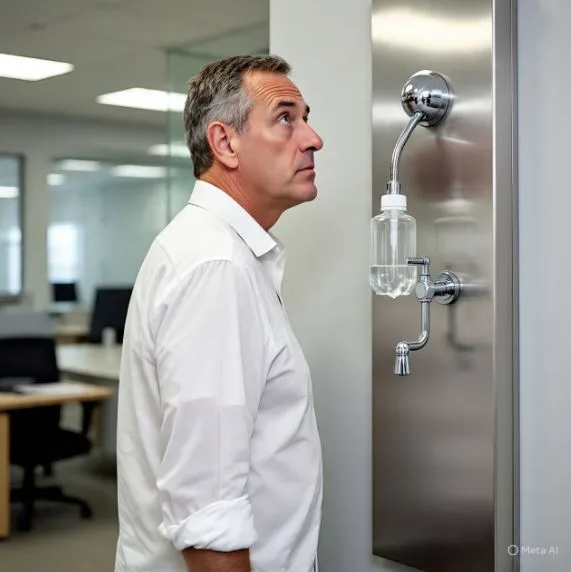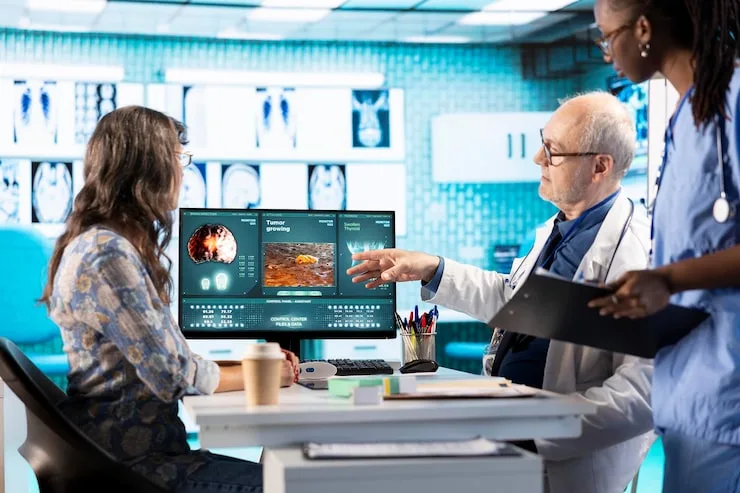The Best Commercial Eye Wash Stations for Small Businesses: Features to Look For
If your team works with chemicals, dust, debris, or even hot food and sanitizers, an eye emergency can happen in seconds. A commercial eye wash station turns a scary moment into a manageable one by letting employees flush contaminants quickly and safely. But with so many models and specs, how do you pick the right unit for a small business—one that fits your space, budget, and compliance needs?
This guide breaks down the types of stations, the essential features to prioritize, and practical tips for placement and upkeep—so you can buy with confidence.
A quick buyer’s checklist
If you’re short on time, prioritize these essentials when comparing eye wash models:
- Activation: One-step, hands-free operation with protective dust covers.
- Water delivery: Soft, aerated flow to both eyes simultaneously; sufficient flow rate for a full flush.
- Run time: Ability to provide continuous flushing for the recommended duration (often cited as 15 minutes).
- Water temperature: “Tepid” (comfortably lukewarm) water helps staff finish a full flush.
- Visibility: Highly visible color, clear signage, and integrated or nearby lighting.
- Access: Unobstructed path, mounted at the right height, and reachable in seconds.
- Durability: Corrosion-resistant materials (stainless steel, powder-coated components, robust plastics).
- Maintenance: Easy weekly checks, test caps, and parts availability.
- Fit & footprint: Compact enough for your space but sturdy enough for daily use.
- Documentation: Installation and maintenance guides, plus clear compliance statements from the vendor.
Understanding your options: types of eye wash stations
Different businesses have different hazards and facility constraints. Start by matching the station type to your environment.
1) Plumbed eye wash stations
Best for: Permanent work areas with a reliable water supply (labs, manufacturing, auto shops).
Pros:
- Endless water supply for sustained flushing.
- Can integrate tempering valves and filtration.
- Typically robust and long-lasting.
Cons:
- Requires plumbing and professional installation.
- Harder to relocate.
What to look for: Solid, hands-free paddle or push-plate activation; dual, gentle spray heads; dust covers; and a built-in or nearby mixing valve for tepid water.
2) Portable/Gravity-fed eye wash stations
Best for: Areas without plumbing or where flexibility is key (temporary stations, mobile teams, warehouses).
Pros:
- No plumbing required; can be wall- or stand-mounted.
- Easy to reposition as workflows change.
Cons:
- Limited water capacity; requires regular refills and preservative changes.
- Heavier when filled; needs sturdy mounting.
What to look for: Adequate tank capacity for continuous flushing, easy-fill openings, clear expiration labels for solutions, and secure, tamper-evident caps.
3) Faucet-mounted eye wash units
Best for: Tight spaces or multiuse sinks (salons, art rooms, small test labs).
Pros:
- Compact and affordable.
- Converts a standard faucet into a dual-purpose fixture.
Cons:
- Depends on faucet availability and sink clearance.
- May require adapters and careful setup to ensure proper water temperature and flow.
What to look for: A quick-switch diverter, splash control, and a clearly marked mode selector so employees don’t lose time figuring it out.
4) Combination shower/eye wash units
Best for: Workplaces with splash hazards to both eyes and skin (chemical handling, industrial kitchens with hot oils, plating lines).
Pros:
- Whole-body drench plus eye wash in one fixture.
- Meets broader emergency response needs.
Cons:
- Requires floor space, plumbing, drainage, and robust water-heating/tempering.
- Higher up-front cost.
What to look for: Independent, clearly labeled activation for shower and eye wash; high-visibility pull rods/paddles; and floor drainage planning.
5) Drench hoses (supplemental)
Best for: Targeted rinsing and interim relief while moving to a primary station.
Note: Drench hoses are great add-ons but typically don’t replace a dedicated commercial eye wash station. Use them as a supplement, not your sole line of defense.
Must-have features (and why they matter)
Hands-free, one-step activation
In an emergency, fine motor skills and vision may be compromised. Prioritize large, intuitive activators (paddles, push plates, foot pedals) that lock “on” until deliberately shut off. Dust covers should pop open automatically so spray heads stay clean without slowing anyone down.
Balanced, gentle flow to both eyes
Look for twin spray heads or an integrated dual-eye “pod” that delivers a soft, aerated stream—strong enough to flush contaminants, gentle enough to avoid forcing particles deeper or causing discomfort. Splash guards help keep water and contaminants from spreading.
Sufficient continuous run time
Many safety programs plan for continuous flushing for about 15 minutes. Plumbed units can run indefinitely; portable units must have enough capacity to meet your policy. If you choose a gravity-fed station, check the tank size and the stated flow/flush duration—not just the headline capacity.
Tepid water capability
Cold water can cause people to stop early; hot water is unsafe. A tempering or mixing valve keeps water in a comfortable, safe range. For small businesses, this can be the difference between theoretical compliance and real-world usability.
Reliable materials and construction
Choose corrosion-resistant parts—stainless steel, brass, or high-grade plastics—to withstand frequent testing and exposure. If your workplace has harsh cleaners or salty air, ask vendors about specific corrosion ratings.
Clear visibility and signage
In a crisis, seconds count. High-visibility green/yellow components, reflective signage, and good lighting help employees find the station fast. If your space is noisy or complex, consider wayfinding decals on floors and walls.
Placement and accessibility
Make sure your station is on the same level as the hazard area, with an unobstructed approach, and mounted at a comfortable height. Avoid doors, storage, or equipment that could block access. For combination units, ensure floor drainage and slip-resistant matting.
Simple maintenance and testing
Weekly activation tests are common in safety programs to confirm water flows, dust covers release, and valves work. Portable units need solution changes on a schedule; keep a log and choose models with easy-to-read status labels. Availability of replacement parts (spray heads, valves, seals) is a major plus—downtime is not.
Freeze and scald protection (when relevant)
Outdoor or unconditioned spaces may need freeze-protected equipment or enclosures. If you have high incoming water temperatures, look for anti-scald features and verify the mixing valve can handle your supply conditions.
Choosing for your space: examples by industry
- Auto shops & manufacturing bays: Plumbed units near chemical wash areas, with robust guards and tepid water controls. Consider combination showers if splashes to skin are possible.
- Restaurants & food processing: Faucet-mounted or compact plumbed stations near dish areas and chemical storage; prioritize splash guards and easy cleaning surfaces.
- Clinics & labs: Plumbed eye washes with precise flow control, tepid mixing valves, and clear weekly testing protocols.
- Art studios & schools: Faucet-mounted or gravity-fed units where plumbing is limited; ensure clear instructions and frequent checks.
- Warehouses: Portable, wall-mounted gravity-fed stations near battery charging areas and janitorial closets—plus drench hoses as supplemental rinsing options.
Budgeting: total cost of ownership vs. sticker price
Small businesses often juggle tight budgets, but the up-front price isn’t the whole story. Compare:
- Purchase price + installation: Plumbed models may cost more to install; portable units avoid plumbing but require sturdy mounting.
- Consumables: Preservation solution and replacement water for gravity-fed units.
- Maintenance time: Weekly tests, annual service, and any recalibration or part replacement.
- Downtime risk: If a unit is hard to service, you may face periods without coverage—unacceptable for safety and operations.
Sometimes a slightly higher-priced station with better parts availability and easier testing ends up cheaper (and safer) over time.
Implementation tips for small teams
- Map your hazards. Identify where chemicals, hot liquids, dust, or debris are present. Place your commercial eye wash station as close as practical to those areas with an unobstructed path.
- Standardize signage and training. Use consistent colors and labels across all sites so employees recognize equipment instantly. Add brief training during onboarding and refresh annually.
- Write a simple testing routine. Create a weekly checklist (flow test, water clarity, dust cover, leaks, log entry). For portable units, add monthly solution checks and a replacement schedule.
- Assign responsibility. Make one person the “owner” of each station—and a backup. Accountability keeps equipment ready.
- Document everything. Keep installation guides, vendor specs, and maintenance logs in a shared folder. In an audit or incident review, documentation matters.
Common mistakes to avoid
- Blocking access with carts or boxes. Even partial obstructions can slow response time.
- Neglecting tepid water. Staff may stop flushing early if water is too cold—undermining the entire point.
- Choosing form over function. A sleek faucet adapter is great—unless your sink has low clearance or confusing controls.
- Infrequent testing. A station that hasn’t been flushed in months can deliver discolored water or have stuck valves.
- Assuming one station covers everything. If you have multiple hazard areas, you likely need multiple stations.
How to compare vendors
When you’re down to a short list, ask each vendor to provide:
- A written statement of compliance and test results for their eye wash unit(s).
- A parts list with pricing and typical lead times.
- Maintenance and installation guides you can preview.
- References from similar-sized businesses or your industry.
- Warranty terms, especially for valves and spray heads.
Don’t be shy about requesting a demo video. Watching a real activation and flush sequence is invaluable for training and confidence.
The bottom line
A commercial eye wash station is a small investment with outsized impact: it protects sight, reduces injury severity, supports compliance, and helps your team feel safe doing their work. For most small businesses, the best choice is the one that employees can reach in seconds, activate with one motion, and comfortably use for a full flush. Start with the right station type for your space, make tepid water a priority, keep maintenance simple and routine, and document everything. With those boxes checked, you’ll be ready for the moment you hope never comes.





